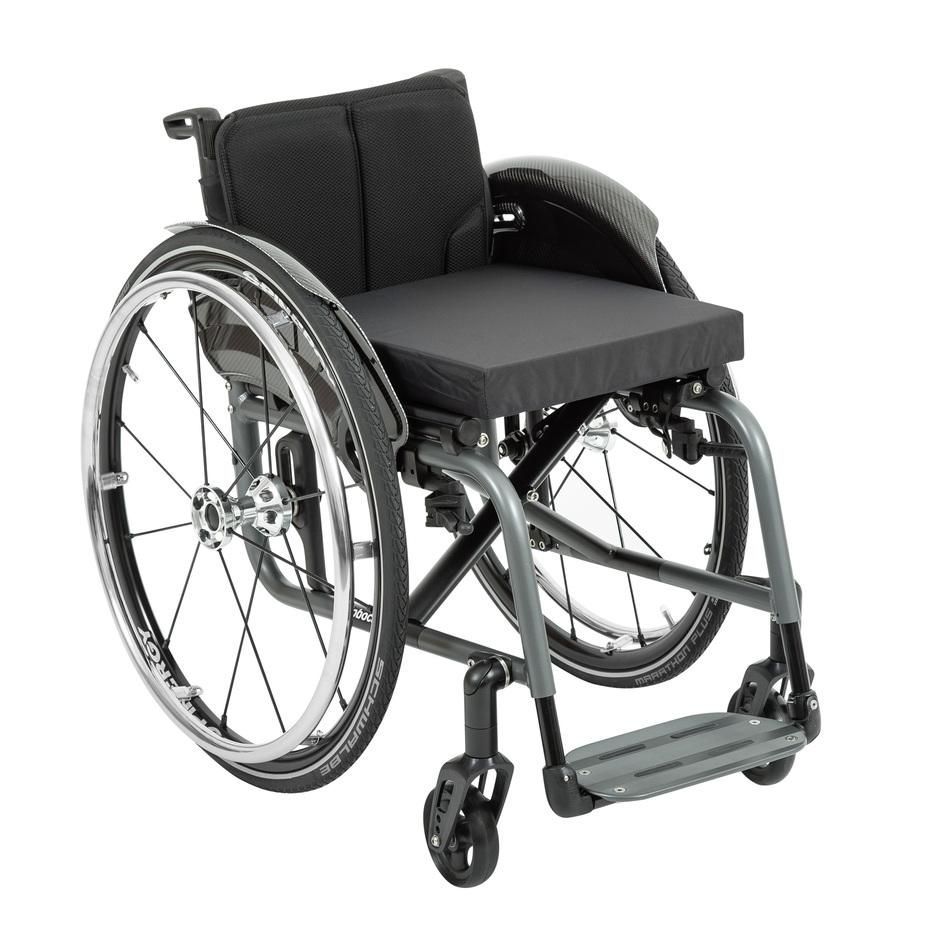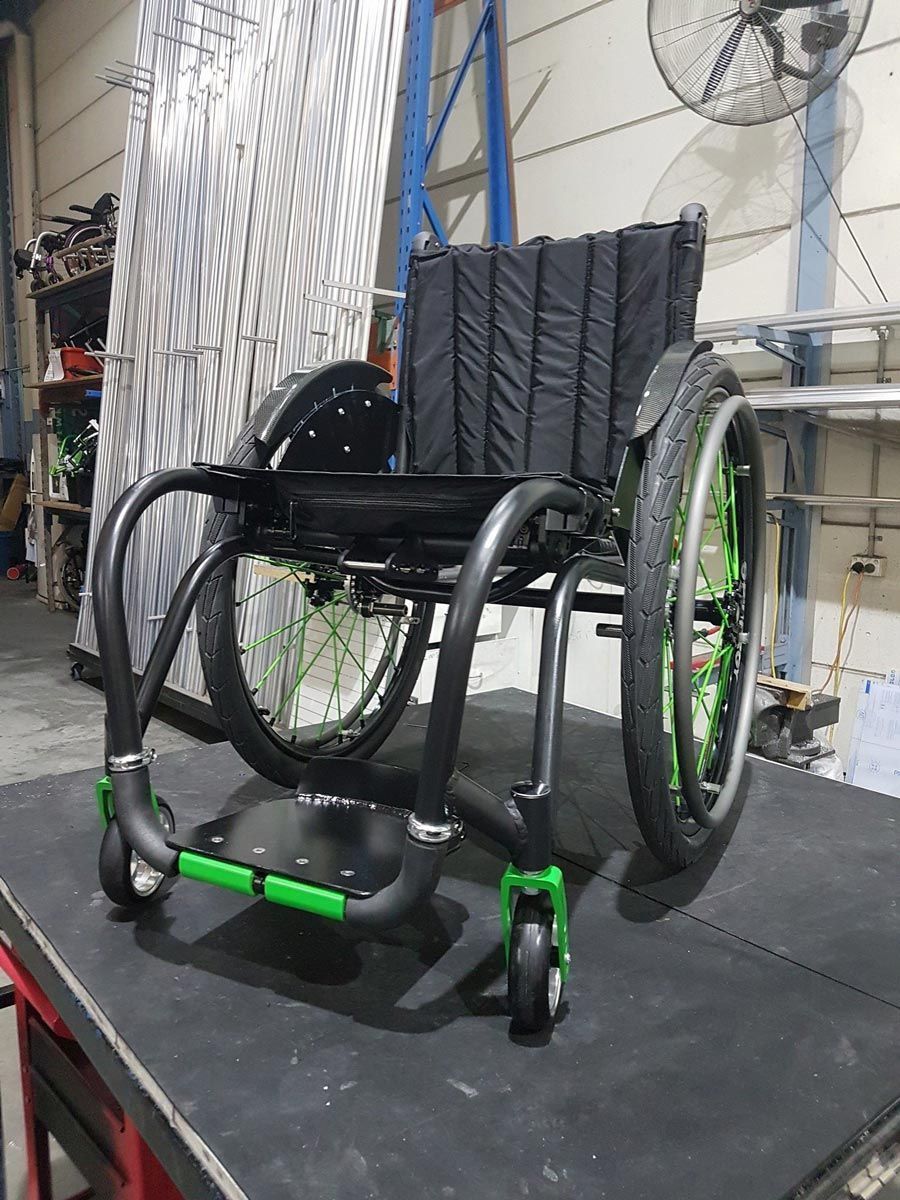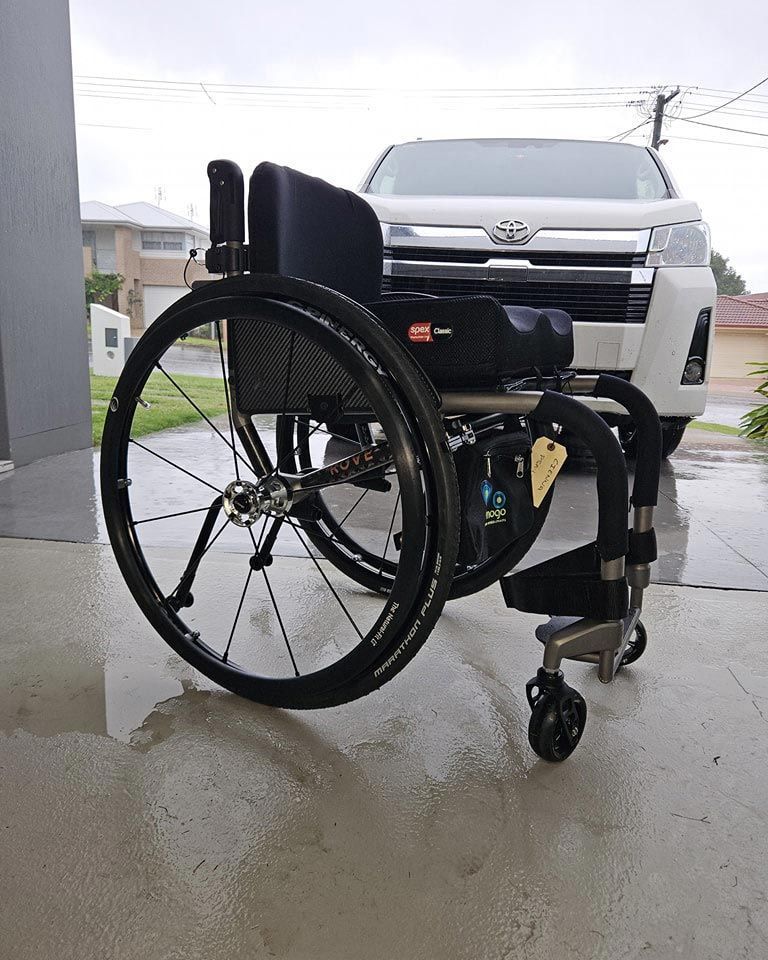Have you noticed your wheelchair feels harder to push, less smooth over surfaces, or is starting to slip when turning corners? These might be signs it’s time to replace your wheelchair tyres. For many wheelchair users in Wollongong, knowing when and how to replace tyres can keep mobility safe, smooth, and reliable.
In this guide, we’ll explore how often to replace wheelchair wheels and tyres in Wollongong, what signs indicate tyre wear, and why investing in quality products matters for your comfort and independence.
Why Tyre Condition Matters
Tyres are a crucial part of your wheelchair, whether you use a manual chair for everyday tasks or a power chair for longer journeys. Worn or damaged tyres can affect:
- How easily your wheelchair rolls.
- Traction on different surfaces.
- Comfort during travel.
- Safety, especially when stopping or turning.
- Overall effort needed to push or manoeuvre the chair.
Keeping tyres in good condition helps maintain your independence and reduces the physical strain of daily movement.
How Often Should You Replace Wheelchair Tyres?
There’s no universal rule for how often tyres should be replaced because usage varies widely among wheelchair users. Factors influencing tyre lifespan include:
- The type of surfaces you travel over (smooth indoor flooring vs rough outdoor paths).
- How many kilometres do you travel each day?
- The weight your wheelchair carries.
- Your specific wheelchair model and tyre type.
- How often do you use your wheelchair for sports or active pursuits?
As a general guide:
- Daily users who travel moderate distances may need new tyres every 12–18 months.
- High-activity users (e.g. sports, long outdoor journeys) might replace tyres every 6–12 months.
- Occasional users may go 2–3 years between replacements if tyres remain in good shape.
However, rather than relying on a set timeline, regularly inspecting your tyres is the best way to decide when replacement is necessary.
Signs Your Wheelchair Tyres Need Replacing
It’s important to recognise the early signs of tyre wear to avoid unexpected breakdowns.
Look out for:
- Visible cracks or splits in the rubber.
- Smooth or bald patches where tread has worn away.
- Flat spots causing a bumpy ride.
- Loss of grip making it harder to stop or turn safely.
- Frequent punctures in pneumatic tyres.
- Loose or wobbly wheels, which may also signal bearing issues.
Even if tyres still appear usable, they may have become stiff or brittle over time, affecting your ride quality and safety.
Benefits of Using High-Quality Tyres & Wheels
Choosing premium brands for Wheelchair Wheels and Tyres in Wollongong , such as Schwalbe or CEW Shox, offers several advantages:
- Durability : High-quality tyres often last longer under regular use.
- Better grip : Advanced tread patterns help with traction on various surfaces.
- Smoother ride : Premium tyres and wheels may absorb vibrations more effectively.
- Reduced rolling resistance : Less effort is required to push the wheelchair.
- Reliability : Fewer unexpected failures mean less disruption to daily life.
While high-quality components may cost more upfront, they often prove economical in the long run due to fewer replacements and repairs.
Choosing Between Pneumatic & Solid Tyres
Wheelchair users generally choose between:
Pneumatic Tyres:
- Filled with air, offering excellent shock absorption.
- Provide a smoother, more comfortable ride.
- Require regular inflation checks.
- Prone to punctures, especially on rough terrain.
Solid Tyres:
- Made of solid rubber or polyurethane.
- Lower risk of punctures.
- Can feel firmer, transmitting more vibration.
- Generally require less frequent replacement.
Your choice depends on how you use your wheelchair and the surfaces you travel over daily. For example, active users or sports wheelchair users might favour pneumatic tyres for smoother rides, while occasional users may prefer solid tyres for convenience.
Checking Tyre Pressure for Pneumatic Tyres
Maintaining the correct air pressure in pneumatic tyres is essential for performance and tyre longevity. Low tyre pressure can lead to:
- Heavier pushing effort.
- Increased tyre wear.
- Reduced traction.
Check tyre pressure:
- At least once a week, if you use your wheelchair daily.
- Before long trips or outdoor activities.
Tyre sidewalls usually display the recommended pressure range. A portable pump with a pressure gauge is a handy tool for home maintenance.
When Should You Replace Wheelchair Wheels?
Tyres aren’t the only components that wear out. Wheelchair wheels also face wear and tear over time. You might need to replace the wheels if you notice:
- Bent rims affecting wheel alignment.
- Loose or broken spokes.
- Worn-out bearings causing noisy or stiff movement.
- Cracks or chips in the wheel material.
Replacing wheels along with tyres can restore smooth, reliable movement, particularly for sports users or those who navigate varied outdoor surfaces.
Tips for Prolonging Tyre Life
To help your tyres last longer:
- Avoid dragging or skidding your wheels unnecessarily.
- Keep tyres clean to prevent grit and debris from wearing down treads.
- Check tyre pressure regularly for pneumatic models.
- Store your wheelchair indoors away from excessive heat or moisture.
- Inspect tyres monthly for early signs of wear or damage.
These small habits can help extend the life of your wheelchair wheels and tyres in Wollongong, saving you money and reducing unexpected breakdowns.
Seeking Professional Help
If you’re unsure about the condition of your tyres or wheels, speaking with a mobility professional or visiting a wheelchair service provider in Wollongong can help.
They can:
- Perform a thorough inspection.
- Recommend the best replacement tyres for your lifestyle.
- Fit new tyres safely and check wheel alignment.
- Advise on high-performance options for sports or custom wheelchairs.
Working with knowledgeable professionals can make a significant difference in your wheelchair’s comfort and performance.
Speak to Us About Wheelchair Tyre Replacement in Wollongong
Your wheelchair tyres are crucial for maintaining mobility, comfort, and safety. While there’s no exact timeline for replacement, regular checks and attention to performance changes can help you decide when it’s time for new tyres or wheels.
At Mogo Wheelchairs, we provide a wide range of wheelchair wheels and tyres in Wollongong, including premium options from trusted brands. Whether you’re looking for a smoother ride, longer-lasting tyres, or high-performance wheels, our team is here to support your mobility needs.
Contact us today to discuss your wheelchair maintenance or explore options for upgrading your wheels and tyres.










